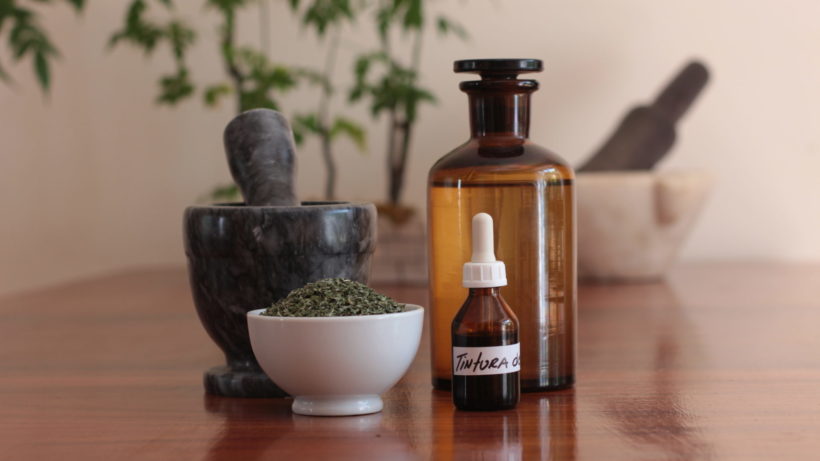This is the fifth instalment of this series in which we are disseminating the most important healing qualities of each plant from the point of view of phytotherapy. We have chosen them for their proximity, affinity and for being suitable for cultivation in the place where we live. And with each one of them there are stories to tell, such as these.
By Horacio Mesón
It gets its name from the Greek “oros ganos” which means the joy of the mountains. Native to the Mediterranean region and Western Asia, it is well known to pizza lovers, its many therapeutic properties less so. It is invigorating, strengthens the immune defences to fight infections, facilitate transit or eliminate itching. The scientific name for oregano is Origanum vulgare. Dr. Hugo Golberg Specialist in Phytotherapy
History of its use in phytotherapy
According to Roman mythology, it is Venus who designed oregano to heal the wounds caused by the arrows of the god of love, Cupid. In Greek mythology, it is said to grow abundantly on Mount Olympus. It was long used to weave the crowns of newlyweds or to create love potions based on the belief that it attracted happiness. Less joyful but just as valuable was its use by the Egyptians in embalming ceremonies.
In the 13th century Matteus Platearius in his book of Simples, gave an accurate description of it: “it divides moods”. However, its use as a medicinal plant seems to date back to Greek antiquity, in the 13th century BC, where it was prescribed to patients with flatulence and gastric disorders, and later by Aristotle against snake bites.
Medicinal properties of oregano
Treats bloating and flatulence, improves transit and relieves digestive and intestinal disorders. Aperitif effect.
External use
Treats wounds, bites and burns, itchy skin (fungus, eczema, skin irritations). Analgesic, useful in migraines and rheumatism. Improves respiratory tract condition in asthma, bronchitis, colds and nasopharyngitis. Display: Oregano
Usual therapeutic indications
- Digestive and carminative: eliminates gas.
- Relieves intestinal problems: transit, colic, etc.
- Improves appetite in sick people.
- Analgesic: greatly reduces inflammatory pain, migraines, rheumatism, toothache.
- Antiseptic and antibacterial: oregano helps to combat the development of fungi, yeasts, viruses and other bacteria. It soothes insect bites and all skin irritations.
- Stimulant: Oregano is tonic and is used in cases of fatigue or asthenia. Antitussive: it is used in cases of chronic bronchitis and cough, asthma and whooping cough.
Other proven therapeutic indications
It is a powerful antispasmodic used in painful periods, colic, gastric and oesophageal spasms. It is an antioxidant, its dried leaves have a high TAC (Total Antioxidant Capacity) index, around 2,000 micromoles, more than oranges.
Some ways to use it
Infusion and inhalation: infuse 50 g of oregano in a litre of water for 7 minutes, 1 cup 3 times a day. It soothes the throat and unclogs the bronchi. Inhalation is another way of working with medicinal herbs, their effect on the organism is faster than oral inhalation, in this case we are talking about respiratory issues.
In oil: soak 100 g of dried flowers in 500 ml of oil heated in a water bath for one hour. Use a soaked tampon to massage painful areas (migraines, sinusitis, rheumatism, stiffness).
Oregano essential oil, together with tea tree oil, is a powerful remedy for foot fungus.
Precautions for the use of oregano
Oregano should be used with caution in people with sensitive terrain: allergy, strong pharmacological treatment, etc.
Contraindications and undesirable effects
Not recommended for allergy sufferers, it contains a compound linalool which is highly allergenic on sensitive sites. With essential oils, an overdose can cause breathing difficulties or heart problems. And essential oils are not recommended for children, pregnant women and people with epilepsy.
Interactions with other medicines
Due to its vitamin K content, oregano may inhibit blood thinners. Phytotherapeutic forms of oregano are also not recommended in chemotherapy treatments.
Recognised benefits
One of the plants widely used in phytotherapy (infusions or essential oils). Analgesic, anti-infectious, antiseptic, antibacterial, antioxidant, its therapeutic virtues are recognised, particularly in the fight against pathogenic germs. Before we say goodbye, please don’t forget the pizzas, I got so hungry…
Contact with H. Meson










